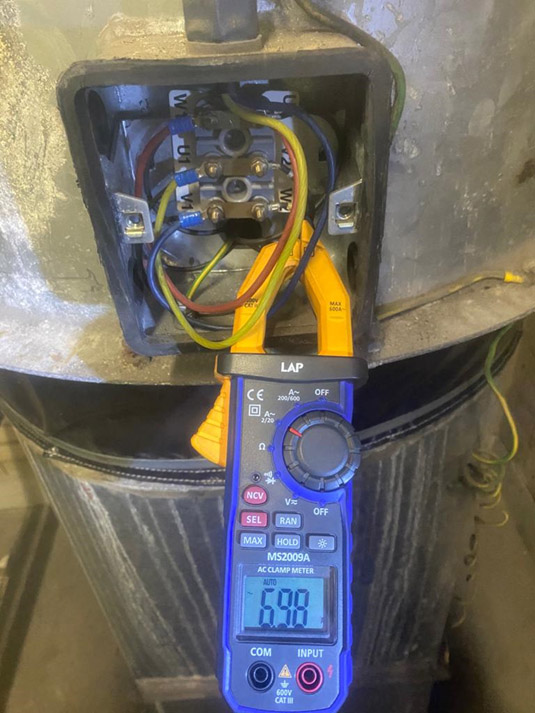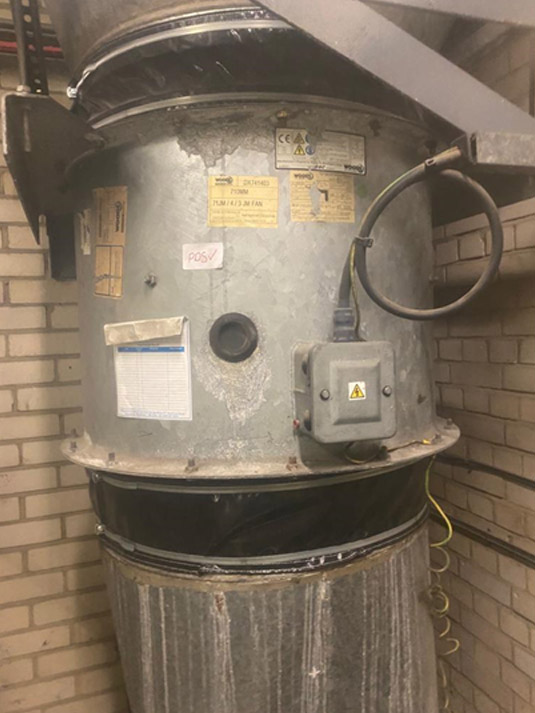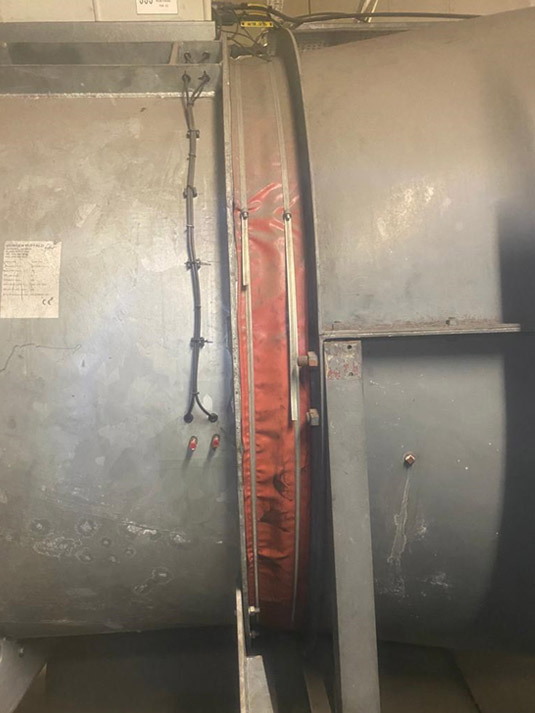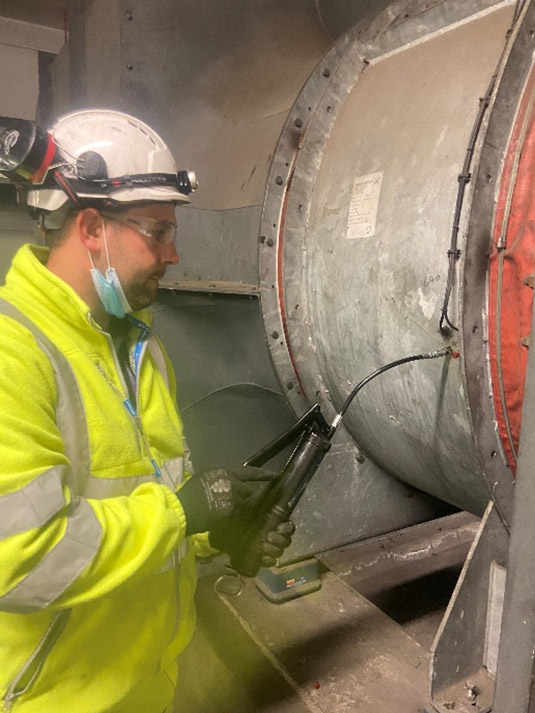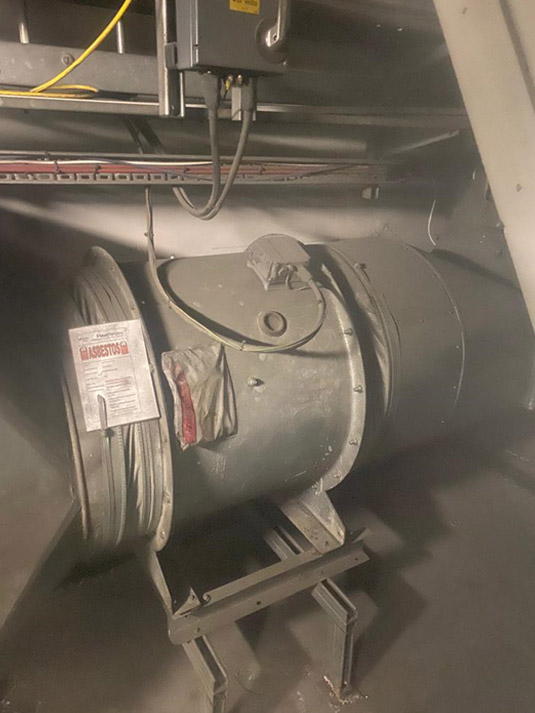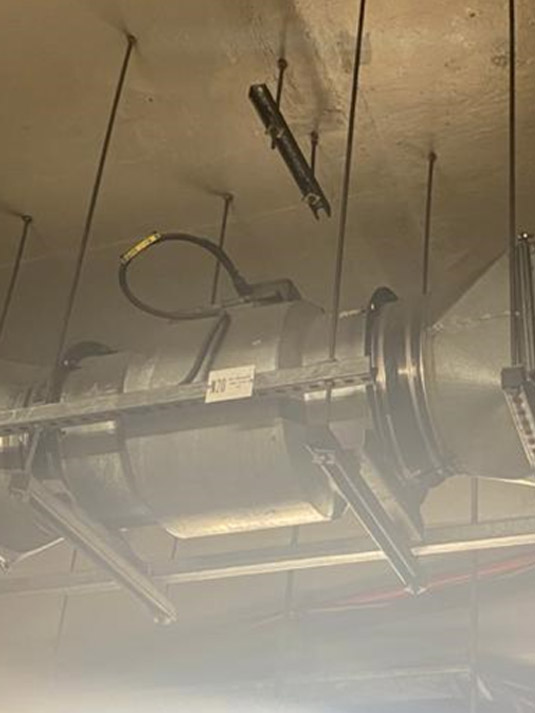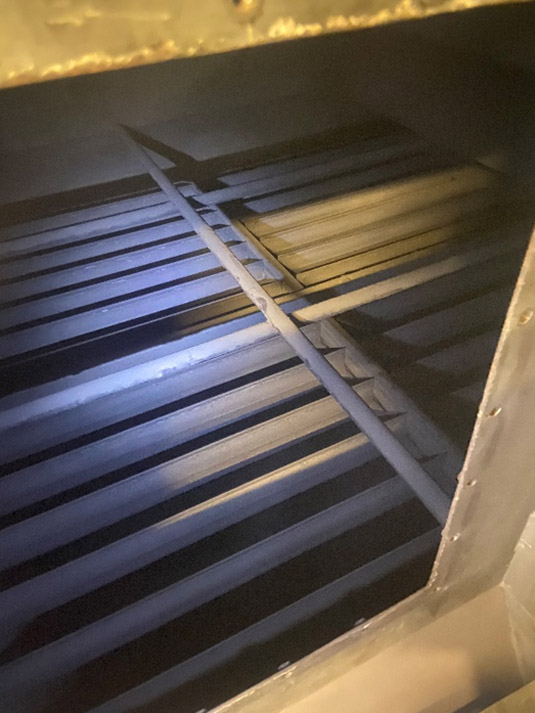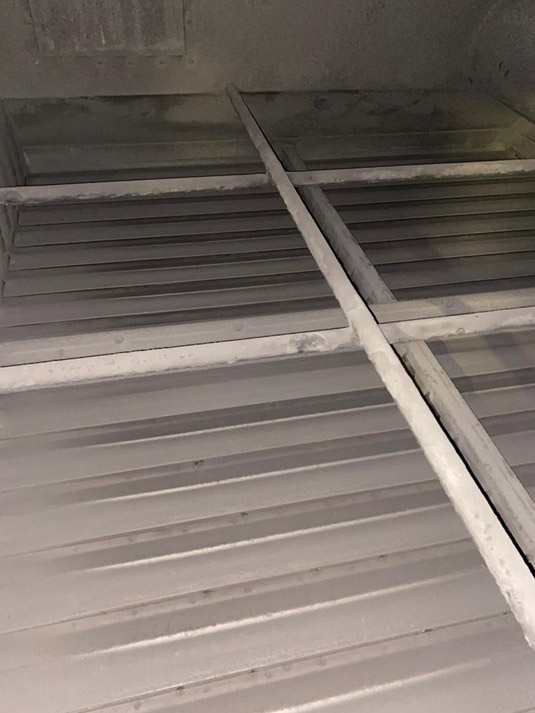Project Description
Reason for Visit
The Gibbons HVAC team was tasked with carrying out Airport Fan Maintenance of the plant room supply and extract fans located at a busy UK Airport. After gathering the necessary tools, the team proceeded through airport security to access the airside of the airport. Once through, they waited at the end of the tunnel for the closure to be completed. Once it was safe to proceed, work was able to begin, starting with the South Plant Room.
South Plant Room
The first task was the maintenance of the supply fan, a 710mm Woods JM fan. The engineers electrically isolated the fan, removed the terminal box lid, and inspected the cables to ensure all connections were secure and undamaged. A clamp meter was attached to check the running amps, and while the fan was in operation, vibration measurements were taken. After shutting down the fan, a visual inspection was conducted to confirm the flexible connectors and anti-vibration mounts (AVs) were in good condition. The fan was found to be operating without any issues and was left in auto mode at the control panel.
Next, the team inspected the 400mm bifurcated Woods extract fan. Unfortunately, the fan was unable to run as a key was required to start it. A visual inspection was conducted, confirming that the flexible connectors and AVs were in good condition. The electrical connections inside the terminal box were also checked, ensuring they were tight and free from damage. However, without the key, we were unable to measure running amps or take vibration readings.
Moving on to the S10 fan, a visual inspection was conducted, confirming the flexible connectors and AVs were intact. The fan was then run up and found to be in full working order. The motor bearings were greased and an issue with the actuator was addressed, which had a fault. Upon isolating the fan and actuator, the team discovered that one of the internal cams had loosened and was not making contact with the switch. This cam was tightened, and tested, and the actuator reassembled. The inspection hatch was removed to check the damper, ensuring it opened and closed correctly, with all components functioning as expected.
The S14 drive and S1 fan were visually inspected, verifying that the flexible connectors were intact and the AVs were in good condition. The fan was then run up and found to be operating without issues. As there was no damper on this fan, no further checks were necessary.
For the S22, S18, and S2 fans, it was noted that all three had been removed from the plant room, so no servicing was required during this visit.
The S6 fan was also visually checked, confirming the flexible connectors and AVs were in good condition. The fan was run up with no issues, and the dampers were checked to ensure they were fully functional. They opened and closed without problems, and the fan was left running in auto mode. The motor bearings were also greased as part of the routine maintenance.
North Plant Room
The supply fan was located in the under croft, and due to an asbestos prohibition notice, our engineers conducted only a visual inspection. The flexible connectors and AVs appeared intact, with no obvious damage. Since the fan was already running, the team was able to take vibration measurements. However, to avoid disturbing any potential asbestos-containing components, the fans were not turned off to inspect the electrical connections. The fan was left as found.
The extract fan in this plant room was situated in an area requiring scaffold access. Our engineers recorded its details and visually checked the flexible connectors and AVs, both of which were in good condition. However, as this was a gas purge extract fan, a key was required to run it in local mode. Without the key, vibration measurements were unable to be taken.
For the N10, N6, and N2 fans, visual inspections were carried out, confirming the flexible connectors and AVs were intact. The fans were then run up, with no operational issues detected. The dampers were tested and found to open and close without problems. However, a fault was identified with the E5 damper, similar to an issue previously encountered with E3 in the South Plant Room. After isolating the unit, it was found that the cam securing the actuator had cross-threaded. A replacement cam was sourced from a spare actuator in the plant room. After installation, the actuator was tested to ensure proper switch engagement. Finally, all three motors were greased, and the fans were left in running order.

